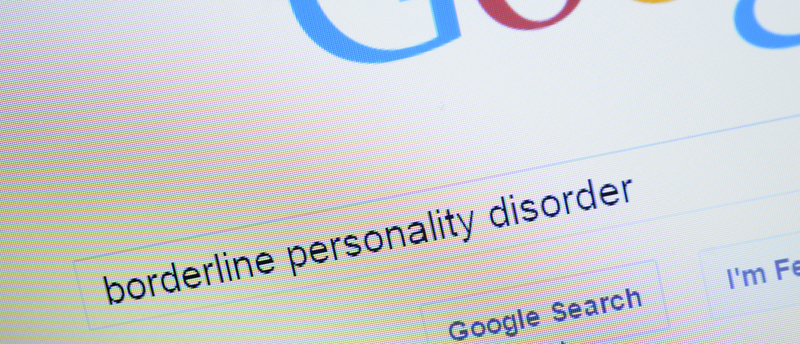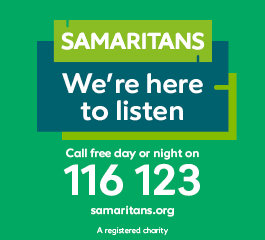We can discuss mental health care responses, but leave my personality out of it
16 September 2019
This article addresses sensitive issues, criticisms, and debates around the Borderline Personality Disorder diagnosis and may be upsetting for people with personal experience of it.
An experimental study on clinical attitudes towards “Personality Disorder” diagnoses (1988) found that psychiatrists were more likely to see those of us with these diagnoses as manipulative, not really in need of help - even with the same symptoms as others (such as suicidal ideation, a previous suicide attempt, and insomnia). We fell on the wrong side of the (questionable) mad/bad dichotomy. The authors proposed abolishing "Personality Disorder" as a diagnosis.
"Borderline Personality Disorder"
Further studies in 2016 and 2017 found depressingly similar results for “Borderline Personality Disorder” (BPD) and “Personality Disorder” respectively. These authors drew different conclusions, either suggesting more targeted clinical training and/or better awareness of clinical staff’s own diagnosis-related biases. Yet, the 30-odd intervening years had already seen several major policy initiatives and training resources aimed at achieving precisely that.
"This is about emotion being labelled inappropriate because the labeller doesn’t feel it".
Discussions around “BPD” - the diagnosis of which I have direct experience - are often framed as arguments about language. And of course, language does matter, complicatedly. Communication is a mess of intention and translation. “My” words as I write this take their meanings from long existence as other people’s words, with shifting contexts and influences, and at the same time are fixed in this context, now. “Mad”, by virtue of my lived experience, can be an insult in your mouth and a reclaimed identity in mine.
But some connotations are easier to change than others. If I trained my dog to sit in response to the command “attack”, I couldn’t reasonably be surprised if people on the bus got hostile. “Personality Disorder” is more like the second example than the first; you can’t tell me my difficulties are located in my personality, my whole self, and then be surprised when that facilitates judgmental or cruel treatment.
Over-representation and subjective criteria
This isn’t just about language, though. It’s about the subjective nature of the diagnostic criteria which allow gendered judgements to enter diagnostic practice, consciously or unconsciously; it's about how clinicians handle not knowing how to help; it's about how we validate - or fail to validate - trauma.
This is clearest regarding the diagnostic criteria “inappropriate, intense anger” and “affective instability” (DSM-5 & ICD-11) or difficulty regulating emotions. Consider whose emotions are typically seen as justified. I have argued before that women’s anger in particular is too often viewed as “inappropriate”, and this is reflected in the gender imbalance whereby 75% of those with a “BPD” diagnosis are women.
There is a similar argument around the clinical perception of emotions in other groups over-represented among those diagnosed with “BPD”: queer people (with the clearest evidence regarding gay and bisexual men), trauma survivors, and autistic people. This is about emotion being labelled inappropriate because the labeller doesn’t feel it: the anger of a child abuse survivor nobody protected, left unprotected from their suicidal thoughts as an adult; an autistic person’s frustration when sensory overload is missed by neurotypical clinicians; the pain of internalised homophobia from a societal acceptance predicated on “don’t ask, don’t tell”.
The thing about such subjective criteria is that it allows the diagnosis to function as a kind of “other” category: if we don’t understand the reasons for your emotions and we don’t know how to help, then your personality is the problem.
The "Borderline" in "BPD" reflects the diagnosis’ history as a "not otherwise specified" box; it originated as a descriptor for those patients not viewed as mad enough for long-term institutionalisation, but who did not improve under psychoanalysis, and so were seen as occupying the border between psychosis and neurosis.
Women, queer people, autistic people, trauma survivors: many people with this diagnosis are in several of these groups. Yet often we see separate narratives that “BPD” is a valid diagnostic category, but x group are being wrongly placed in it. Relatively few join up the dots and ask: if all these groups are being misdiagnosed with “BPD”, how many people would be left with those groups removed?
Complex Post-Traumatic Stress Disorder: an alternative diagnosis?
Complex Post-Traumatic Stress Disorder (CPTSD) is one alternative which has been gaining traction. It features in the recently-ratified (but not yet implemented) ICD-11, sharing the “Borderline” focus on emotional dysregulation and difficulty maintaining relationships, but coexisting with a separate “Personality Disorders” section. CPTSD as an alternative to "BPD" has the significant upside of locating an individual’s difficulties outside their personality. A clinician is more likely to be ashamed of dismissing someone as difficult “because they have CPTSD” than “because their personality is disordered”.
However, I worry about the specific kinds of experience which are validated as “bad enough” to be considered traumatic, both in the ICD-11 formulation and in the broader discussion of Adverse Childhood Experiences (ACE) which has gained prominence on a similar timescale.
The emphasis is on interpersonal traumas, atrocities inflicted by one person or group against another. I'm glad to see these validated but there is an exclusion of more diffuse marginalisation-related traumas: poverty, internalised ableism, racism, sexism, transphobia, homophobia. The day-to-day ways we learn that for us, the world isn’t safe or fair, the complicated ways these pains concentrate or disperse across generations. I read the ACEs checklist and the ICD-11 CPTSD criteria and my heart sinks because of course everyone else with problems like mine has had real trauma in their lives, whereas my life hasn’t been bad enough to justify them. So if we are going to be trauma-informed, we have to be very careful not to gatekeep (restrict people's access to an identity, service, or group) and feed the cycles of self-invalidation which - ironically - are often instilled in survivors by those who traumatise them.
- See more: Living with Borderline Personality Disorder: video insights from Jessica Murray
- See more: The complaints I never made
"I don’t know the best solution"
I have friends who understand the iatrogenic harm (harm caused by medical professionals'/services' responses) associated with “BPD” and dislike the name, but feel that no other categories describe their difficulties accurately. I want to honour that.
I don’t know the best solution; there is too broad a range of experience sucked into this construct for there to be a single alternative, and I can’t imagine it existing but not being applied so widely.
For myself, if we who are given a "Personality Disorder" diagnosis are effectively the dumping ground of diagnoses, the box they put you in when they’ve run out of boxes, compassion, or ideas for how to help - then I just want honesty about that.
Something we learn in therapy, if we are lucky, is to name uncertainty and tolerate it. Many of us with this diagnosis are the victims of psychiatric professionals’ inability to build a system which follows their own advice. I urge them to change that, to stop pushing that fear of not having the answers back onto us. Use some of those “not elsewhere specified” ICD codes.
Call us the “leftover mentals” if you like. I don’t care. Just leave my personality out of it.
For support, see MHT's I need urgent help, I'm feeling suicidal or I have experienced or witnessed something traumatic pages.
Rachel Rowan Olive is an illustrator, researcher, and mental health service user/survivor.
On 27th September, she is delivering a workshop for those with a personal and/or professional interest in “Borderline Personality Disorder” and related issues such as self-harm, suicidality, and trauma. Find out more about the event, organised by Mind in Camden: I is for Insult: questioning “Borderline Personality Disorder”.


Comments
Write a Comment
Comment Submitted